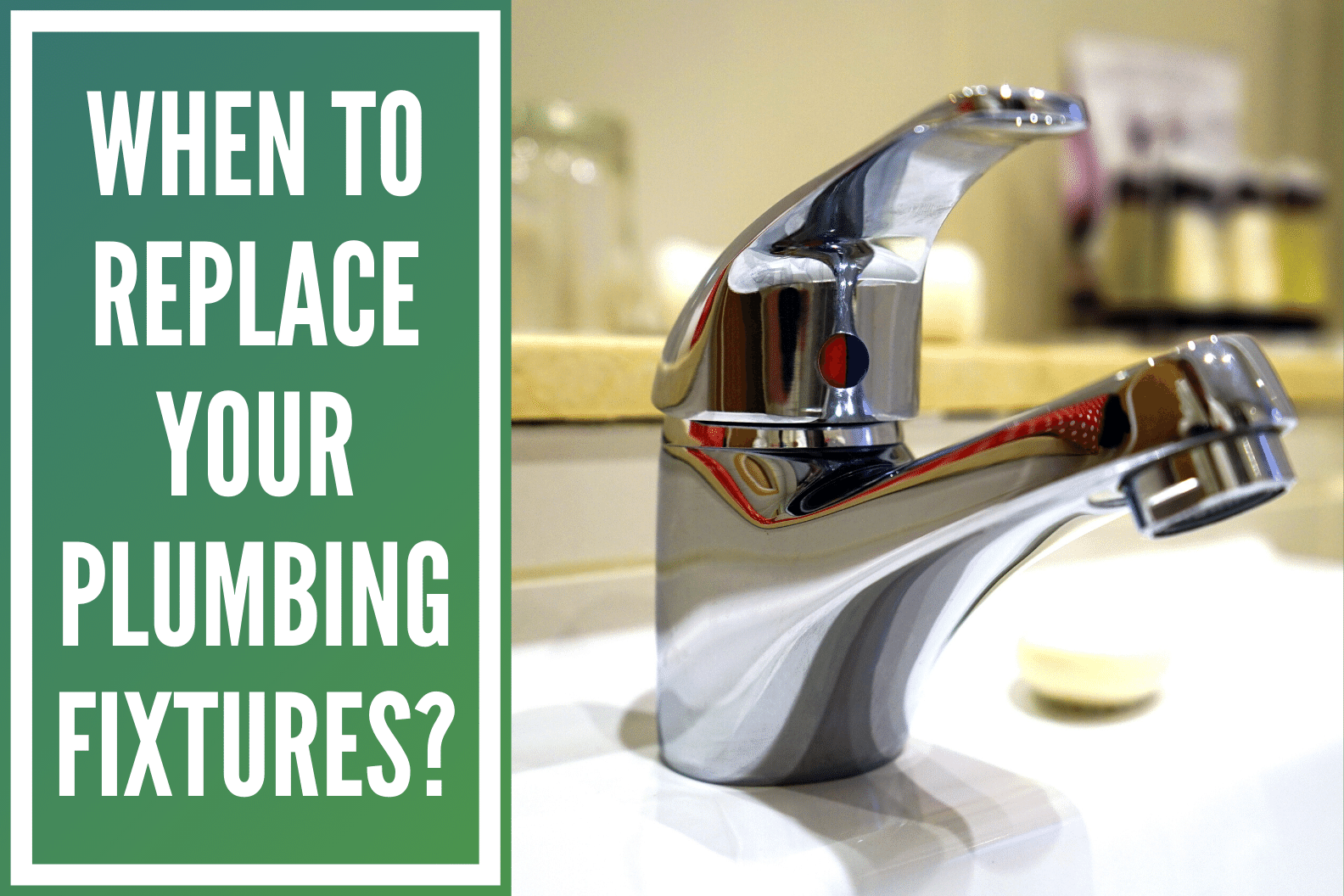When it comes to household plumbing projects, they can arise due to a number of reasons. Sometimes, it’s out of necessity as a water heater may have simply stopped functioning properly or a sewer line collapsed! Other times, it could be with an intention to spruce things up or prepare for a home to hit the market. All in all, a plumbing project isn’t always a “pain” sell, as they would say in the marketing world, and can be viewed as a “happy” one.
One of these projects that can fall under both of these categories is replacing your plumbing fixtures. As technology has advanced, so has a plethora of possibilities available in terms of plumbing fixtures. Having been in the industry for over 40 years now, it’s truly been amazing to see this transformation first-hand! Touchless technology, gravity-fed toilets, laminar-flow showerheads, you name it!
Having said all of that, this week’s blog post is going to provide a cost-benefit analysis of replacing your plumbing fixtures. We’ll talk about how the popular low-flow models will provide savings in the years to come thanks to their incredible efficiency, as well as when you should consider replacing something versus just repairing it!
When should I replace my plumbing fixtures?
What may seem like a minor inconvenience at the time can quickly lead to some major problems down the road. When plumbing fixtures aren’t working correctly, it could mean (1) something is wrong with the fixture itself or (2) there’s an underlying issue in your pipes that’s not as visible. Here’s a few of the most common reasons why we see homeowners choosing to replace their plumbing fixtures, as opposed to continuing with patchwork repairs.
Modern look and feel
Whether you’re looking to get your home sold or simply do some renovation for cosmetic purposes, installing modern-day fixtures is a terrific place to start! If you’re upgrading everything else in the bathroom, you can’t still have that toilet or sink from the 90’s or early 2000’s. It will just look out of place! Particularly for those trying to sell their home, you’d be surprised how big of a difference a new showerhead, toilet and sink can have.
Constant repairs
This is an argument we make frequently with water heaters, but if a repair bill accounts for nearly 50% of the replacement cost, NEVER go with the repair. While it may seem like you’re saving a few bucks right away, chances are this dated fixture will act up again in the future. Plus, as we’ll get to later in this blog, the new low-flow fixtures are going to save you money on other monthly bills as well!
With this in mind, just be aware that any fixture which has been in use for 10-20 years is particularly susceptible to chronic leaks and low water pressure, among other issues. While these can technically be repaired, it’s very tough to guarantee the same issue won’t pop up again a few months down the road.
Inefficiency
As we briefly alluded to in the introduction, technology has drastically changed the entire plumbing fixture industry. Gone are the days of toilets using nearly 4 gallons per flush. Enter low-flow fixtures (which will be focused on in the next section). Replacing all of your toilets, faucets and showerheads to these modern low-flow models can substantially reduce your water bill. At the same time, it’s certainly not a bad thing for the environment either! While it may seem like we’re never going to run out of safe water, the truth is we need to conserve some of this for future generations!
Why install low-flow fixtures?
Low-flow fixtures have become synonymous with modern day plumbing. It has truly brought the entire plumbing world to a level of efficiency never witnessed before. Essentially, they get the job done just as well as their non low-flow competitors, all while doing so in a sustainable way that saves homeowners money on their water bills.
To provide you with a quick history lesson, the National Energy Policy Act in 1994 required all toilets sold in the United States to use a maximum of 1.6 gallons of water per flush. Compare this with those manufactured in the 1980’s using 3.5 gallons per flush, and you start to see why this is such a smarter move efficiency-wise. Low-flow fixtures have met these regulations and some have even gone lower to ensure max efficiency!
Installing new faucets
We’ll touch on low-flow toilets more in a bit, but we’ll get started with faucets. Like any other dated fixtures, old faucets wasted quite a bit of water. In short, any fixtures that use over 2.5 GPM should be replaced right away. FaucetBoss reports “the average flow rate of faucets are between 1.0 GPM (Gallons Per Minute) and 1.5 GPM.” Most faucet installations are rather affordable investments and will help liven up your bathroom or kitchen.
Another possibility that is even more affordable would be installing an aerator or flow restrictor. These can be added to nearly any faucet model and work to limit the amount of water actually flowing out. All of this is completed while still maintaining that feeling of a high-pressure flow.
Low-flow toilets
Certainly one of the most well-known benefits to have arose from the low-flow technology are the toilets. Considering federal regulations went into effect in the early-1990’s, most toilets in homes should be using a max of 1.6 gallons of water per flush. However, if there’s anyone out there with a toilet installed in the 80’s, we recommend getting that swapped out immediately. Trust us, it’ll save you plenty on your water bill each month, as it could easily be using north of 4 gallons of water each time it’s flushed!
For the most part, low-flow toilets have been perfected to the point where they perform just as well as any toilet has ever performed. Initially, there were some concerns that this may not be the case, after all they were using nearly 2 gallons of water less per flush. However, there is no longer even an inkling of a concern on this matter.
Low-flow showerheads
Our final stop on the topic of low-flow fixtures is the showerheads. Another fixture that receives plenty of usage throughout the year and as a result, another perfect opportunity to conserve some water for future generations! Current U.S. regulations set the maximum flow rate for showerheads at 2.5 GPM. Meanwhile, to achieve “low-flow” status, you can’t go above 2.0 GPM (with many low-flow models going well below this standard).
As stated on WaterPik’s website, “If every household in the U.S. installed WaterSense® labeled low flow shower heads, we could save more than 250 billion gallons of water annually, which could supply more than 2.5 million U.S. homes with water for a year, according to the EPA.” In addition to these massive savings in water conservation efforts, homeowners also are saving at the same time on their monthly water bills. A true win-win situation! Even though it’ll likely take decades before low-flow showerheads are installed in nearly every home, we hope this helped you realize a small fixture change can make a massive difference in providing clean water for future generations (and keep some extra money in your pockets)!
Hire the fixture installation experts in Kansas City!
Here at Stine-Nichols Plumbing, we are serious about providing the utmost precision with each and every plumbing project. Whether that be doing the rough-in at a downtown Kansas City high-rise or installing a new toilet for a local homeowner, you can always trust our experienced and licensed technicians.
As evidenced throughout this blog, a quick and rather affordable way to upgrade any bathroom or kitchen is to install new modern-looking fixtures. It’s something that everyone instantly notices upon entering a room and will certainly give your house a little more charisma that it didn’t already possess. If you’re interested in getting some new fixtures installed, receive some manufacturer recommendations or simply would like to have some general pricing, we encourage you to give us a call at 816-348-3481 or fill out the free quote form here.


